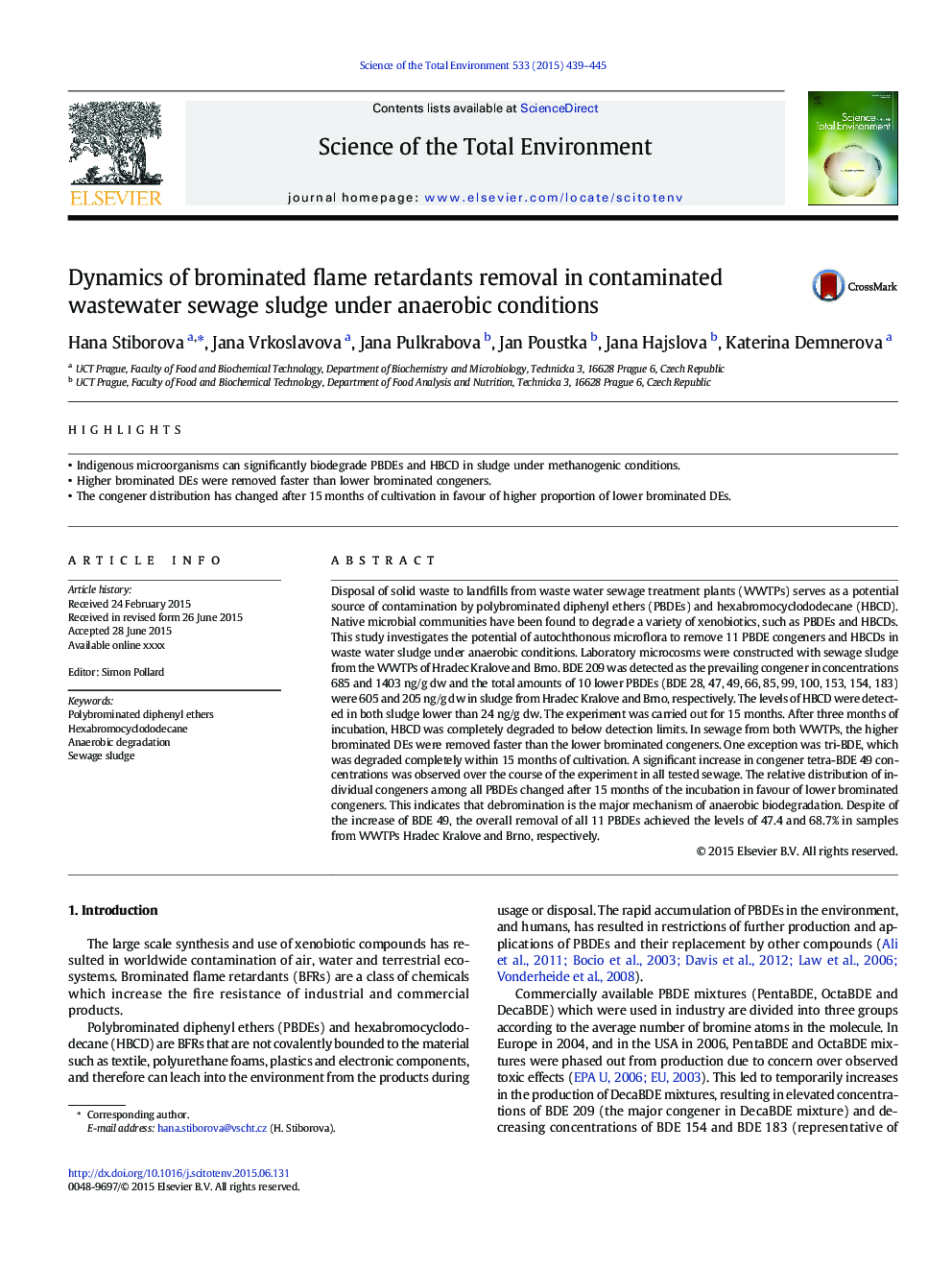| Article ID | Journal | Published Year | Pages | File Type |
|---|---|---|---|---|
| 6326291 | Science of The Total Environment | 2015 | 7 Pages |
Abstract
Disposal of solid waste to landfills from waste water sewage treatment plants (WWTPs) serves as a potential source of contamination by polybrominated diphenyl ethers (PBDEs) and hexabromocyclododecane (HBCD). Native microbial communities have been found to degrade a variety of xenobiotics, such as PBDEs and HBCDs. This study investigates the potential of autochthonous microflora to remove 11 PBDE congeners and HBCDs in waste water sludge under anaerobic conditions. Laboratory microcosms were constructed with sewage sludge from the WWTPs of Hradec Kralove and Brno. BDE 209 was detected as the prevailing congener in concentrations 685 and 1403 ng/g dw and the total amounts of 10 lower PBDEs (BDE 28, 47, 49, 66, 85, 99, 100, 153, 154, 183) were 605 and 205 ng/g dw in sludge from Hradec Kralove and Brno, respectively. The levels of HBCD were detected in both sludge lower than 24 ng/g dw. The experiment was carried out for 15 months. After three months of incubation, HBCD was completely degraded to below detection limits. In sewage from both WWTPs, the higher brominated DEs were removed faster than the lower brominated congeners. One exception was tri-BDE, which was degraded completely within 15 months of cultivation. A significant increase in congener tetra-BDE 49 concentrations was observed over the course of the experiment in all tested sewage. The relative distribution of individual congeners among all PBDEs changed after 15 months of the incubation in favour of lower brominated congeners. This indicates that debromination is the major mechanism of anaerobic biodegradation. Despite of the increase of BDE 49, the overall removal of all 11 PBDEs achieved the levels of 47.4 and 68.7% in samples from WWTPs Hradec Kralove and Brno, respectively.
Related Topics
Life Sciences
Environmental Science
Environmental Chemistry
Authors
Hana Stiborova, Jana Vrkoslavova, Jana Pulkrabova, Jan Poustka, Jana Hajslova, Katerina Demnerova,
